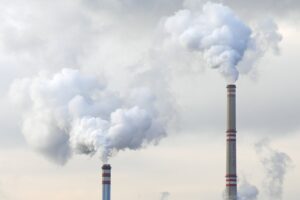Reflections on Inflation: how bad has it been?

THE increase in prices that countries have experienced since March 2022 has brought old fears about the deleterious impact of inflation. It is true that prices increased after the Russian invasion of Ukraine and this affected a series of commodities that are imported. Yet, it is important to understand how much prices have increased, the nature of inflation we have experienced, and the reaction of central banks.
The Philippine consumer price index (CPI) increased from 3% in January and February 2022, to 4% in March. Afterwards, the pace accelerated somewhat. The increase peaked in January 2023 at 8.7%. Since then, the increases have been smaller every month. The latest figure is 6.1% for May. So yes, prices have increased.
What has been frustrating about the reporting of inflation during the last year, is that I often got the impression that we were witnessing and suffering an episode of hyperinflation. Economists like Ken Rogoff, Larry Summers, or Frederick Miskin, and reports from the US Fed, the European Central Bank, the Bank of England, the IMF, the World Bank, the Bank for International Settlements, in 2022 warned about the calamitous consequences of inflation; in particular, that once it starts it inevitably becomes uncontrollable, and that inflation harms growth. Central Banks in advanced economies decided to increase interest rates and those of many developing countries applied the same medicine to prevent capital outflows and currency depreciation.
Is it true that the 2022 and early 2023 inflation was so bad? To evaluate how large the surge in prices has been we need some historical benchmarks. Research on the subject also enlightens the issue. Economists have accepted since the study of Philip Cagan (1956) that hyperinflation refers to inflation greater than 50% for at least a month.
According to this definition, there have not been episodes of hyperinflation in advanced market economies since the end of World War II. Episodes of hyperinflation have occurred in the former soviet republics after the collapse of the Soviet Union (shock therapy, sudden price deregulation), and in a few Latin American and African nations. What else do we know about hyperinflation? First, that, with a few exceptions, it did not last for years. Second, that it is associated with extreme conditions: war, political turmoil and mismanagement, or the transition from a command to a market economy.
If someone thinks that I am exaggerating with my reference to hyperinflation, the most cited study on the subject is that by Dornbusch and Fisher (1993), who referred to “high inflation” as that in excess of 40% yearly; “moderate inflation” as that between 15 and 30%; and “low inflation” as that below 10% — so, yes, Philippine inflation is within the low range. What did they find? First, that most episodes of moderate inflation had been caused by commodity prices or other external shocks, and not by monetary policy excesses. Second, that only a few countries transited from moderate into high inflation. In most cases, inflation remained moderate, or decreased to low.
On the fear that once inflation starts accelerating it does not stop, the evidence is also scant. This is likely to happen only when inflation exceeds 40%. When inflation is moderate or low, it does not accelerate. Therefore, there is no evidence that inflation accelerates and becomes uncontrollable.
And certainly, there is no evidence that the lack of acceleration in prices is due to central banks’ acting pre-emptively. So, no medals please. Evidence also questions the claims about the beneficial effects of inflation targeting. Here the evidence is that low inflation is not associated with higher growth and higher productivity.
Does inflation choke growth? No, this is another unfounded claim. Bruno and Easterly (1998), in more solid research, found that only inflation above 40% was associated with significantly lower growth. In many cases, in fact, the relationship between inflation and growth is positive (when inflation is within the moderate range). Research also points out that what causes output to decline is not inflation but the relentless efforts to lower it.
Given this review of what economists know about inflation, it is surprising that governments across the world, including that of the Philippines, put the reduction of inflation on top of their agendas. In the case of the Philippines, the price increase was concentrated in the Food and Housing categories, with about 30% increases. This included the well know case of onions, whose price shot up from P70 a kilo in April 2022 to as much as P700 in December 2022. I am not going to dismiss these increases as I know they affected many people. Yet, let’s make it clear that all this was short-lived.
The recent inflationary episode started after the Russian invasion of Ukraine in early 2022. Until then, inflation related to COVID-19 was thought of by most economists and international institutions as a temporary phenomenon caused by supply chain breakdowns. Yet, Lawrence Summers argued in 2022 that US inflation was not transitory, that it was related to the large fiscal and monetary packages put together to address the pandemic: it was excessive demand stimulus. Summers compared the recent episode to those of the 1960s, 1970s, and early 1980s (wage growth; wage-price spirals), without acknowledging that the situation today is completely different.
Since then, discussions about the nature of inflation have been unclear. As the prices of food, fertilizers, and energy increased in 2022, inflation fighters insisted that the situation required interest rates hikes to reverse the effects of the monetary policy applied during the pandemic. While the IMF argued initially in a report that inflation was a temporary phenomenon, in late 2021 it started arguing that it was possibly more than temporary and warned against permanent and unfunded fiscal packages. Economists have not agreed yet on the relative contributions of supply and demand factors in the current inflation surge. This has caused significant policy confusion. In 2022, the IMF Managing Director doubted the world faced a runaway inflation threat. There were similar statements by, for example, the Bank of England Chief Economist.
Despite this, we have witnessed a tough anti-inflationary policy stance. For example, the Chief Economists of the IMF and Bank of International Settlements, as well as the Chair of the US Fed, urged policy makers to take measures to tame inflation by increasing interest rates. Officials from the Bank of International Settlements and the European Central Bank acted the same way. In all cases, statements were a mix of arguments about the causes of inflation (a mix of supply and demand) but the policy prescription was to increase interest rates.
By June 2022, over 80 central banks had raised interest rates. The problem is that this policy prescription might not be the right tool. This prescription might be valid in case inflation was caused by excess demand, that is, demand outstripping the potential of the economy. This requires cooling it down by suppressing consumption and investment. This is the basis of the inflation targeting model that guides the economic policy model of many central banks. Outside this, one has to ask if interest rate increases will lower the price of onions in the Philippines, which in reality is the result of an inefficient distribution system, and not of the fact that the demand for onions suddenly shot up. Moreover, increases in interest rates sooner or later end up affecting investment and slowing down the economy. Interest rate increases the cost of borrowing, which also sooner or later borrowing firms pass on to consumer prices, thus compounding the problem.
Developing countries have been the victims of decisions made by the central banks of advanced economies when these started increasing interest rates. It was difficult for the central banks of developing countries not to follow suit to presumably avoid massive capital outflows and currency depreciation. The Bangko Sentral ng Pilipinas (BSP) raised the policy interest rate seven times in 2022, from 2% in March to 5.5% in December, and two times in 2023, up to 6.25% currently. I celebrate the monetary board’s decision in May to pause rate hikes after careful consideration of the country’s recent economic performance.
To tame inflation, the Philippine government ought to focus efforts on increasing productivity growth and addressing regulatory issues in the agricultural sector, particularly traders and middlemen who exhibit monopolistic behavior and increase their profit margins. This should have been combined with fiscal policy measures to support low-income families, and monitor how firms increase their markups. Although inflation has been slowing since March, the reversal of high markups by traders due to congressional pressure and the continued normalization of the agricultural market distribution system deserves more credit for the reduction in the inflation rate than the interest rate increases over the past year. This is evidenced by the significant drop in prices of food and non-alcoholic beverages.
Jesus Felipe is a distinguished professor of Economics and director of the Angelo King Institute, De La Salle University.




